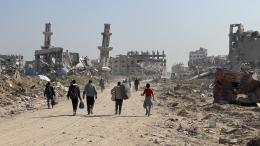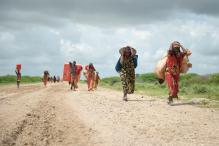This paper provides insights into major recent trends in violent conflict, and analyses the implications of these trends for international actors engaged in conflict prevention and management. It finds that:
-
After declining for much of the 1990s, the number of major civil wars has almost tripled in the past decade. The number of minor civil wars have also risen in recent years, largely due to the expansion of the Islamic State and its affiliates.
-
From 2011 to today, there has been a six-fold increase in battle deaths, with 2014 and 2015 being the deadliest years on the battlefield since the end of the Cold War.
-
With a decline in civil wars ending in military victory, the conflict relapse rate has increased. 60% of conflicts in the early 2000s relapsed within five years.
-
Some forms of violence against civilian populations in wartime are increasing, posing challenges to the protection of civilians. Among the key trends we see is that: a larger share of today’s mass atrocities takes place in the context of civil wars; rebel groups have become increasingly responsible for the majority of civilian deaths; and the number of displaced people due to violence is at an all-time high.
-
Conflicts are becoming more intractable and less conducive to traditional political settlements mainly due to three developments:
-
Organised crime has emerged as a major stress factor that exacerbates state fragility, undermines state legitimacy, and often lowers the incentives of armed groups to enter political settlements;
-
The internationalization of civil wars tends to make them deadlier and longer;
-
The growing presence of jihadist groups in conflict settings complicates peacemaking and fosters a “hunker down and bunker up” mentality among international actors, especially UN peace operations, on the ground.
-
Access Civil War Trends and the Changing Nature of Armed Conflict here.
This paper was produced as a background note for, and later updated to reflect the deliberations of, an April 2017 conference hosted by UNU-CPR, in partnership with The Ditchley Foundation, on “Non-State Actors and the Changing Nature of Conflict.” The conference brought together senior policy practitioners, experts, and business leaders to explore how the international community needs to adapt its conflict management tools in order to meet challenges posed by new trends in conflict.
This paper is based in significant parts on a 2014 UNU-CPR Occasional Paper on conflict trends, but with some updated data and analysis.



